| Author |
Message |
    
doug11k
Advanced Member
Username: doug11k
Post Number: 47
Registered: 12-2003
| | Posted on Thursday, July 10, 2008 - 08:30 pm: | 




|
Picked up this fresh water Tuttle yesterday. 5 hp? I think, No. 5N5. Came with a schebler D & a Kingston 5-ball. Anyone know the date company changed name to Tuttle Co.
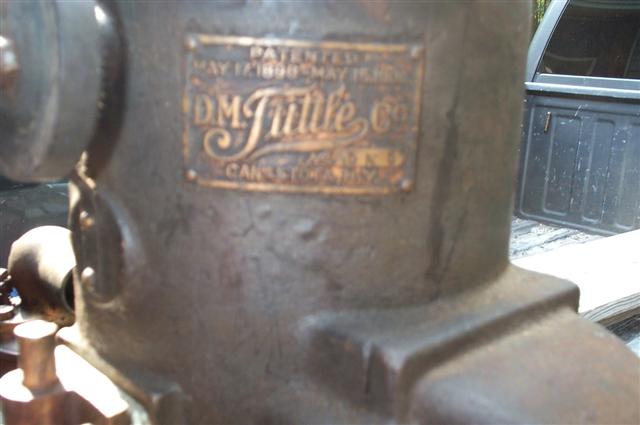
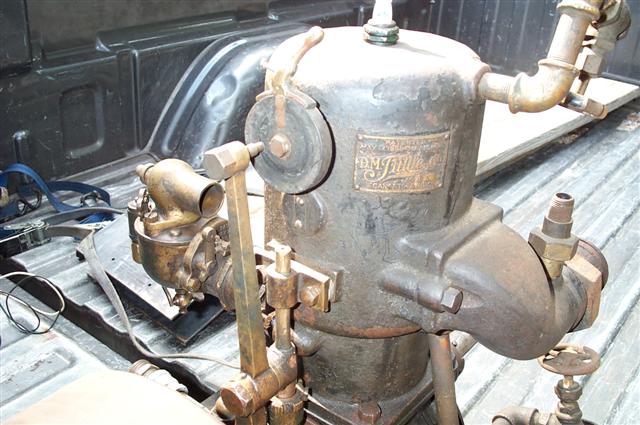
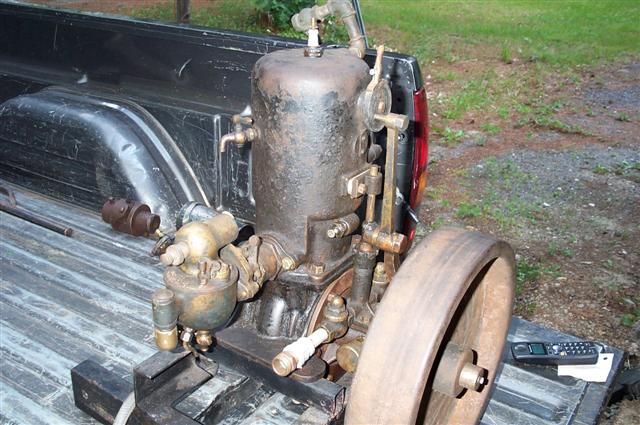
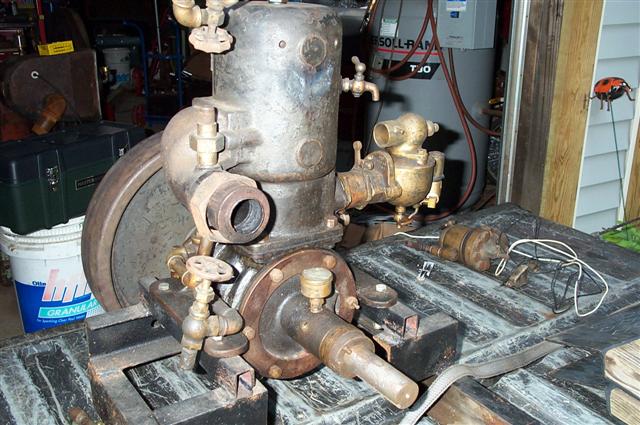
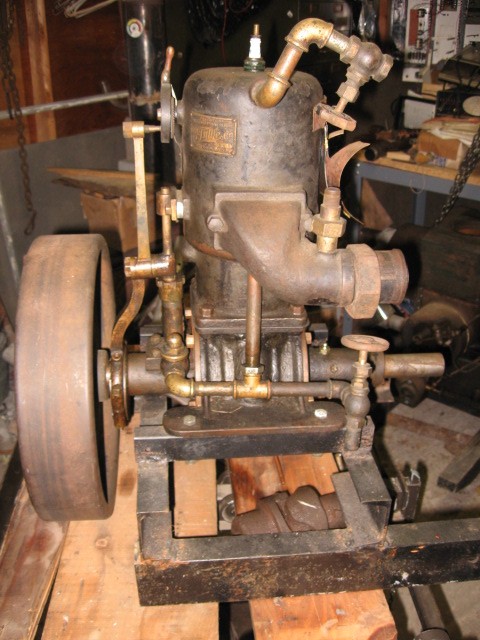
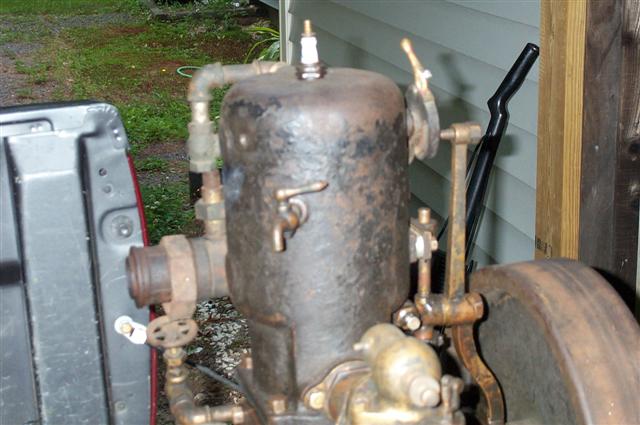 |
    
jb_castagnos
Senior Member
Username: jb_castagnos
Post Number: 378
Registered: 07-2002

| | Posted on Thursday, July 10, 2008 - 10:49 pm: | 




|
Can't offer any info but it looks like agreat find. Only thing that might be missing is an oiler to the front of the cylinder. Those timers are fun to watch. |
    
richarddurgee
Senior Member
Username: richarddurgee
Post Number: 1738
Registered: 11-2001
| | Posted on Friday, July 11, 2008 - 12:04 am: | 




|
*
Doug
Great find, Tuttle changed name 1911, yours looks like 1908, had a three line single glass oiler and Tuttle carburetor ! just back home after couple weeks and scanner not working - computer Gremlin ?.
i'll scan for you when Gremlin is exorcised ?
* |
    
doug11k
Advanced Member
Username: doug11k
Post Number: 48
Registered: 12-2003
| | Posted on Friday, July 11, 2008 - 08:20 am: | 




|
I did get a single glass, two-line oiler with it... 3 1/4" glass.
I'd be interested in seeing a Tuttle carb.
Flywheel is 3 1/4" by 15" & 1 1/4" bore. Stroke is 5"; not sure of bore.
It came with grease cups on the mains. I'm assuming that two lines of three line oiler were for the mains & other for the cylinder?
It's got pretty good compression with "bounce back".
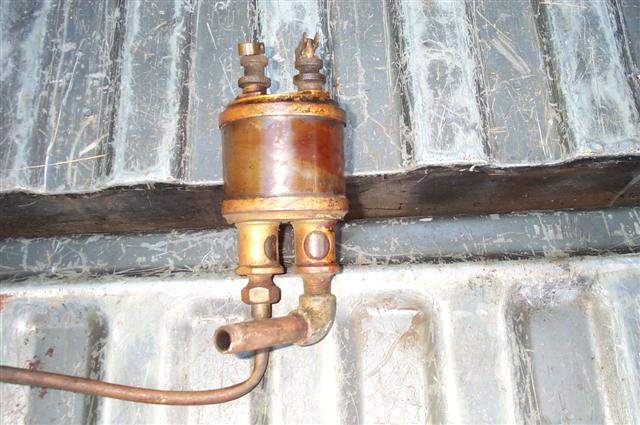 |
    
keith
Senior Member
Username: keith
Post Number: 196
Registered: 02-2002

| | Posted on Friday, July 11, 2008 - 08:38 am: | 




|
Not sure if this would be the correct year carb?
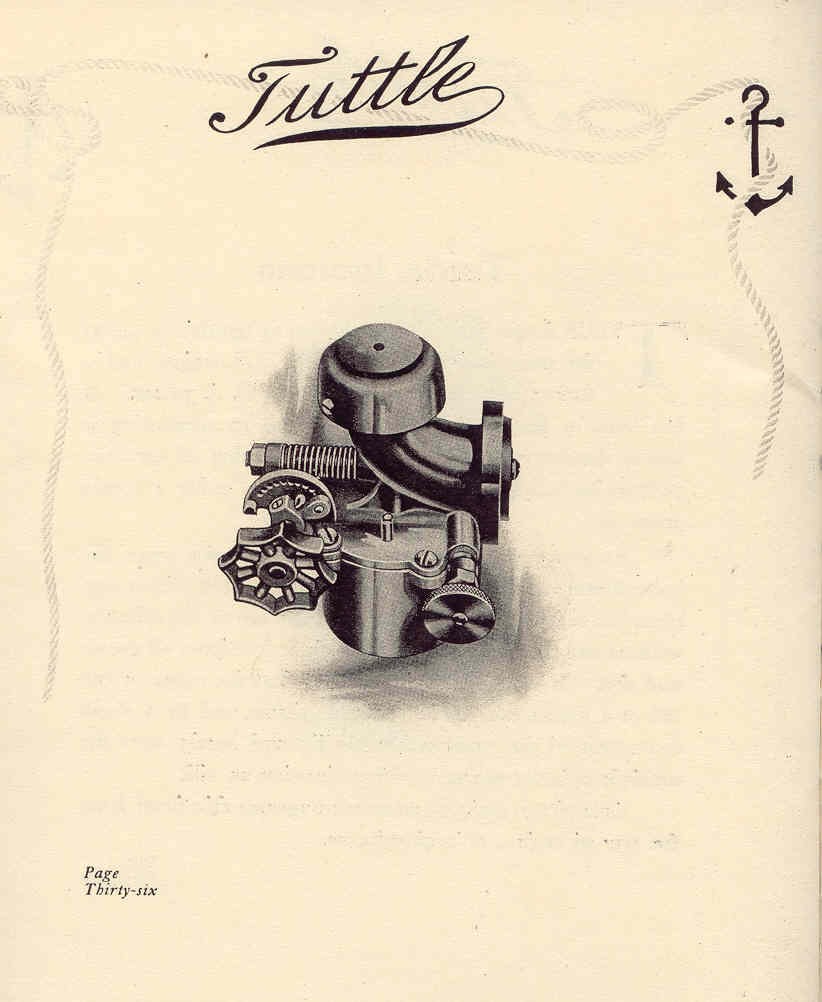
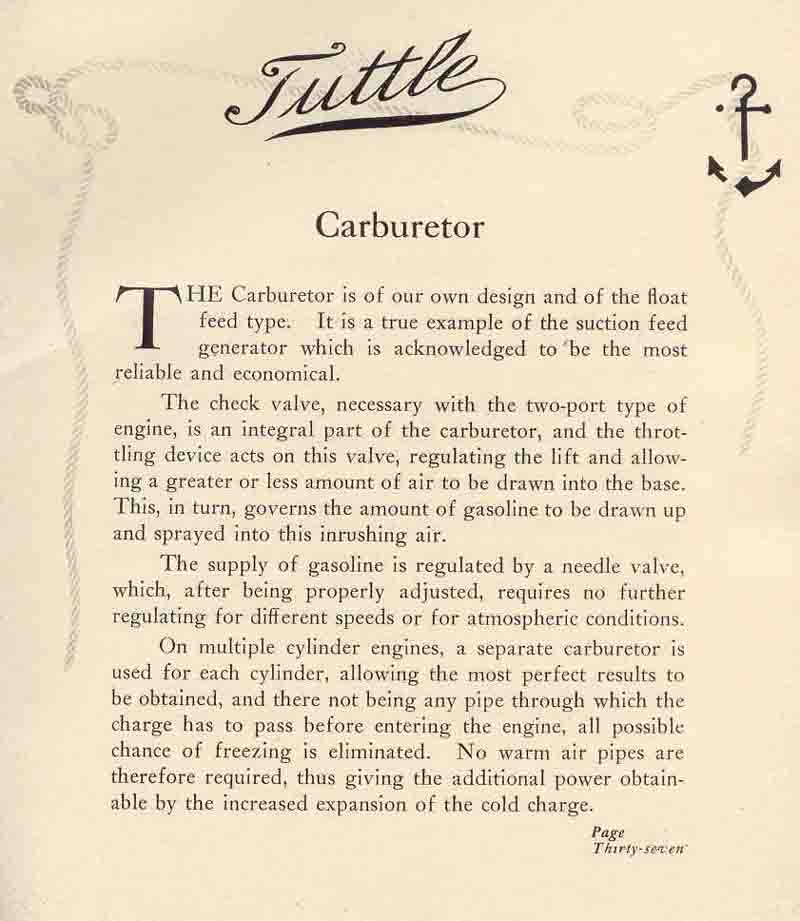 |
    
richarddurgee
Senior Member
Username: richarddurgee
Post Number: 1739
Registered: 11-2001
| | Posted on Friday, July 11, 2008 - 01:50 pm: | 




|
*
Keiths photo of carb is the one for the 1908 5N.
1908
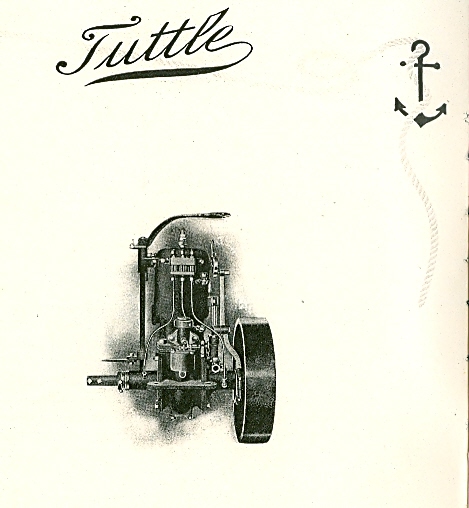
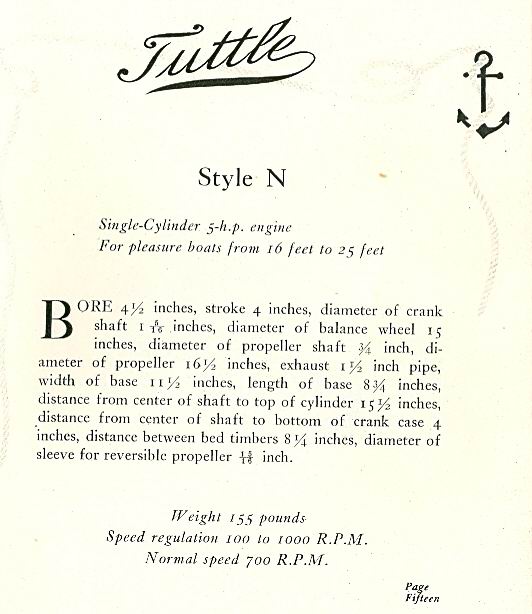
* |
    
doug11k
Advanced Member
Username: doug11k
Post Number: 49
Registered: 12-2003
| | Posted on Friday, July 11, 2008 - 07:56 pm: | 




|
Thanks Keith & Richard,
I went out & re-measured the stroke. It is 4" not 5". Don't imagine there is much chance of finding an original carb!!
What is this port located behind the water pump? Looks like a 3/8" pipe thread in block with a bronze hex plug that has been tapped for a 1/4"-20 cap screw. Cylinder oiler tube? Seems quite low.
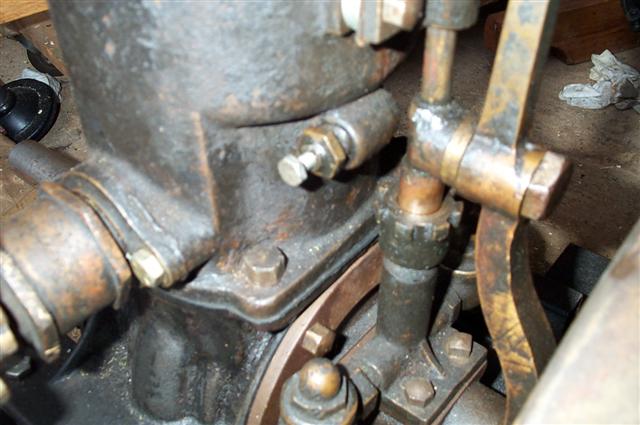 |
    
richarddurgee
Senior Member
Username: richarddurgee
Post Number: 1740
Registered: 11-2001
| | Posted on Friday, July 11, 2008 - 08:54 pm: | 




|
*
Doug, the center oiler tube goes there-- Possibly the pressure source ??
1908
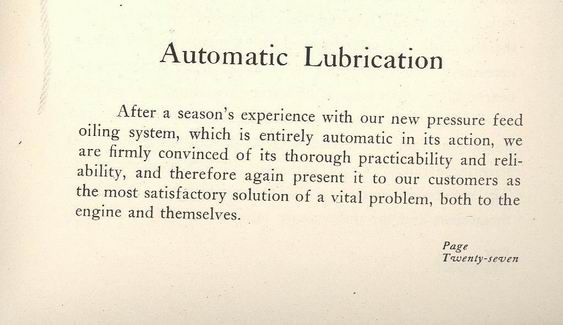
* |
    
richarddurgee
Senior Member
Username: richarddurgee
Post Number: 1741
Registered: 11-2001
| | Posted on Friday, July 11, 2008 - 09:02 pm: | 




|
*
Looks as if the timer was Tuttle patent and rights to use were sold to other Mfgrs !
1908
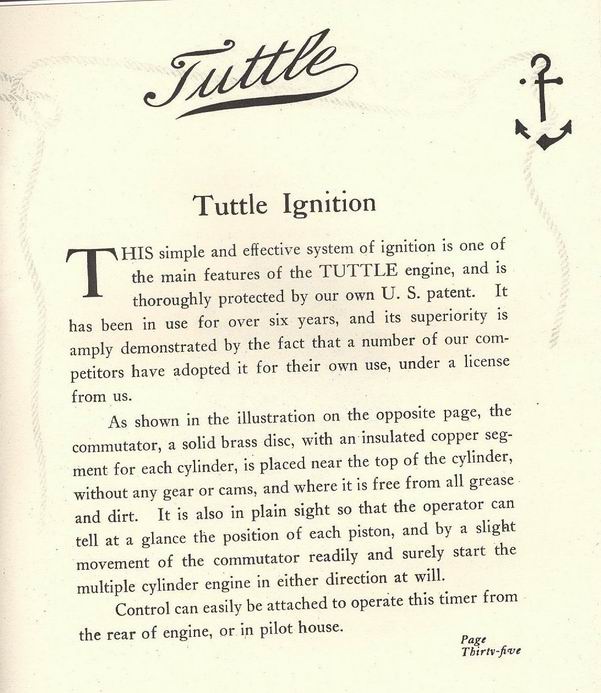
* |
    
ernie
Senior Member
Username: ernie
Post Number: 849
Registered: 01-2002

| | Posted on Saturday, July 12, 2008 - 09:35 am: | 




|
That port is most likely cylinder lube. If the oiler had a pressure port it would go directly into the crankcase. The port on the front of the cylinder is only open to the crankcase as the piston is moving up and crankcase pressure would be decreasing at that time. The oiler needs positive pressure. |
    
ernie
Senior Member
Username: ernie
Post Number: 850
Registered: 01-2002

| | Posted on Saturday, July 12, 2008 - 09:44 am: | 




|
As to the timer I think Tuttle is the only engine that used this exact style. Some others Belle Isle for one had a similar timer, however the moving timer contact didn't have the center pivot bolt in it's arm. I think the main difference is that the Tuttle timers moving contact moves in a perfect circle the same dia as the timer body. I seem to remember the Belle Isle style moves in a oval or much smaller circle. I don't have a Belle Isle here now so I can't confirm. Richard is yours easy to get to?
The advantage of the moving contact moving in a circle instead of an oval or small circle would be a greater range of timing adjustment. |
    
richarddurgee
Senior Member
Username: richarddurgee
Post Number: 1742
Registered: 11-2001
| | Posted on Saturday, July 12, 2008 - 09:58 am: | 




|
*
Ernie, The only engine I have with this Tuttle type timer is a DuBrie, its in a warehouse I'll look at it and see what the circular motion is ?
DuBrie
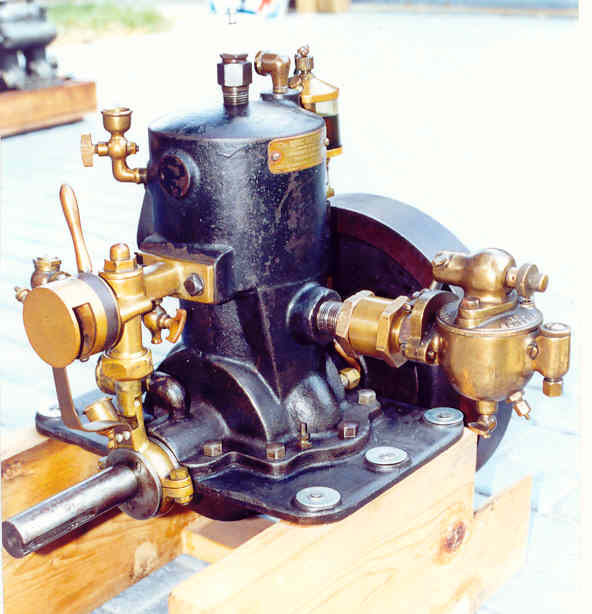
* |
    
ernie
Senior Member
Username: ernie
Post Number: 851
Registered: 01-2002

| | Posted on Saturday, July 12, 2008 - 03:51 pm: | 




|
Yup that is the style. When you actually compare the 2 they really don't have much in common except a moving contact.
Additionally the Tuttle style could easily be used be used on multiple (more than 2) cylinder engines. I have the remains of a tripple. Sorry no pics as it's too hard to get to. |
    
doug11k
Senior Member
Username: doug11k
Post Number: 52
Registered: 12-2003
| | Posted on Tuesday, July 15, 2008 - 09:51 am: | 




|
Have done a patent search & can find nothing on the Tuttle automatic, pressure fed oiler system. My engine has two 3/8" tapped holes high on aft side of cylinder previous owner had mounted a gas tank with. The location & spacing suggests that they were originally for mounting the oiler sight glass/needle valve block. In Richard's "Automatic Lubrication" cut above I see no connection for supply of oil(reservoir)to needle valve/sight glass assembly or pressure(crankcase or mechanical lubricator)connection.
In this cut Searcher sent me of a twin and of a triple posted by Richard Durgee in a previous post supply lines are shown to each main bearing & cylinder ... no supply or pressure connection to oiler block. On both the twin & triple I see a rail below carbs just above engine mount flange running between the individual crankcases. A connection does not appear to show on the single cylinder engine. What is this "rail"? Anyone have a photo of an actual engine with this oiling scheme?
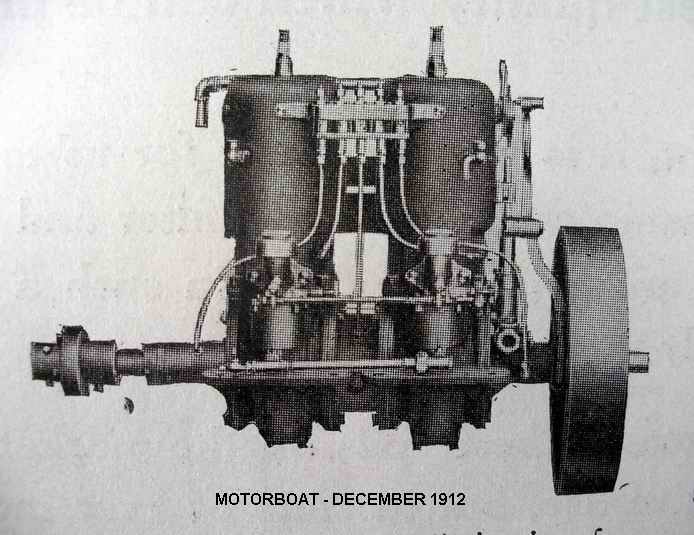
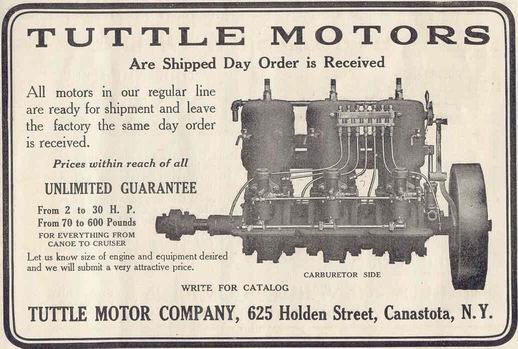 |
    
doug11k
Senior Member
Username: doug11k
Post Number: 53
Registered: 12-2003
| | Posted on Tuesday, July 15, 2008 - 10:20 am: | 




|
Searcher just sent another cut of Sept. 1909 Motorboat advertising cut showing another twin that appears to show a sixth line from oiler block to the aft cylinder crankcase. What I've been thinking was a solid block of square cross section located above the sight glasses must be a hollow reservoir pressurized by cc pressure.
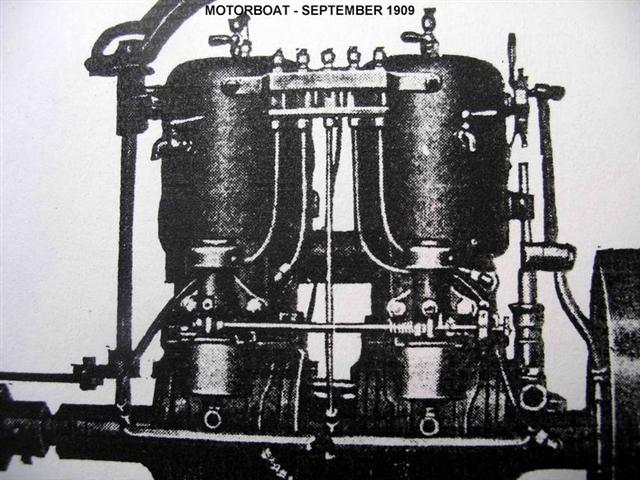 |
    
richarddurgee
Senior Member
Username: richarddurgee
Post Number: 1743
Registered: 11-2001
| | Posted on Tuesday, July 15, 2008 - 09:15 pm: | 




|
*
Post 52 - Rail looks to be connected to carb float bowls with individual petcocks, Common bowl drain ??
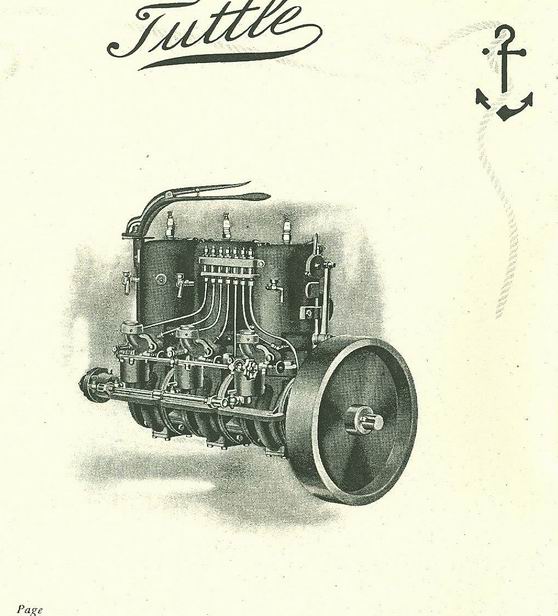
* |
    
jb_castagnos
Senior Member
Username: jb_castagnos
Post Number: 382
Registered: 07-2002

| | Posted on Tuesday, July 15, 2008 - 10:55 pm: | 




|
Looks like a line coming up the back side feeding the block, must go to a pressurized resrvoir. |
    
richarddurgee
Senior Member
Username: richarddurgee
Post Number: 1747
Registered: 11-2001
| | Posted on Tuesday, July 29, 2008 - 02:34 pm: | 




|
*
Tuttle ad 1911
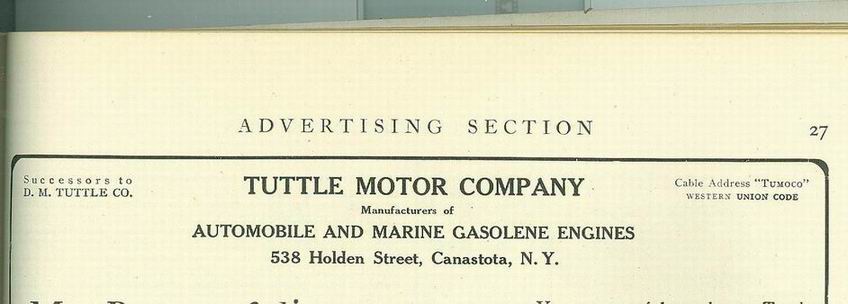
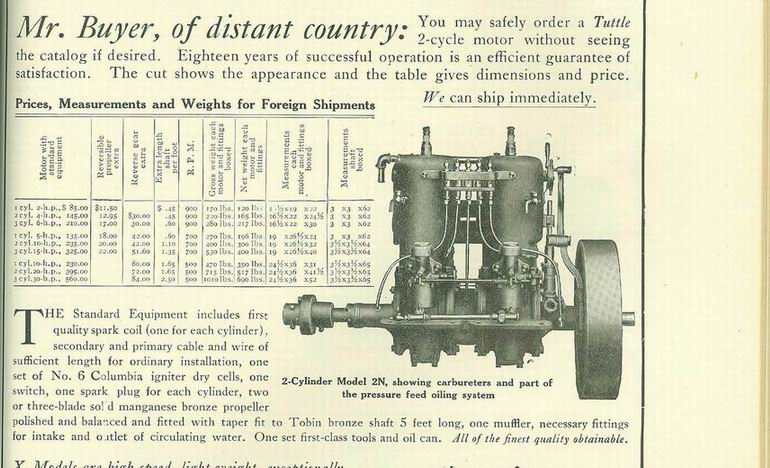
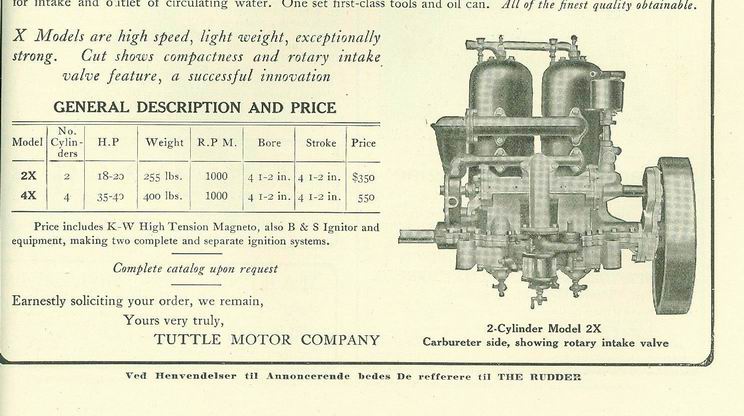
* |
    
rbprice
Senior Member
Username: rbprice
Post Number: 560
Registered: 11-2001

| | Posted on Thursday, November 03, 2016 - 11:43 am: | 




|
Some help with the Tuttle air intake cap on the carburetors. In the picture of the single carb posted by Richard Durgee, there is a small screw on the left side of the cap. Is that the fastener that holds the cover to the top of the intake pipe with four rectangular openings? On both of the carbs for my Tuttle twin, the little hole is on the right of the intake pipe.
Your comments would be most appreciated. Thanks |
    
bruce
Senior Member
Username: bruce
Post Number: 588
Registered: 07-2002
| | Posted on Thursday, November 03, 2016 - 05:51 pm: | 




|
JB figured out the pressure oiler system needing the oil reservoir-July 2008 post. I think raa has the cast Tuttle oil reservoir with his engine installed in his Tuttle boat, There's another set up installed in a small Rushton Speed launch in the Antique Boat Museum in Clayton NY. The reservoir is cast iron and is about the size of a half gallon jug. Odd I've never seen the pressure oiler tank in the Tuttle literature. |
    
raa
Senior Member
Username: raa
Post Number: 133
Registered: 02-2007

| | Posted on Thursday, November 03, 2016 - 07:31 pm: | 




|
Here are a couple of crankcase pressure oiled engines.The Straubel takes the oil in thru the cylinder wall, down the hollow wrist pin down thru the center of the rod past a check valve to the large journal for oiling.Th e Tuttle crankcase pressurizes the cast iron tank past a check valve and then up to a manifold for distribution to the mains etc.
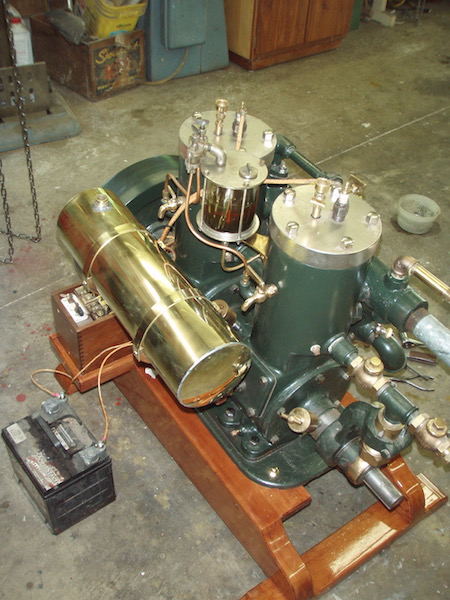 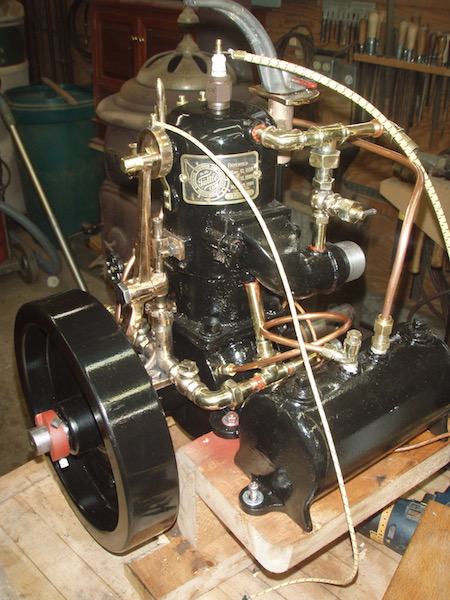 |


